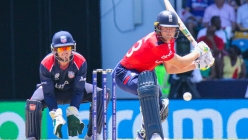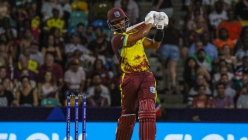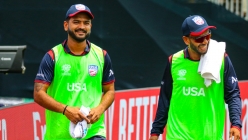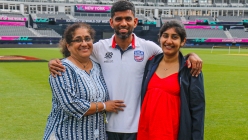Views
USA Cricket: 2018 WCL Division 3 Report Card Part 3 – Outlook for 2019 WCL Division 2
2018 Nov 26 by DreamCricket USA
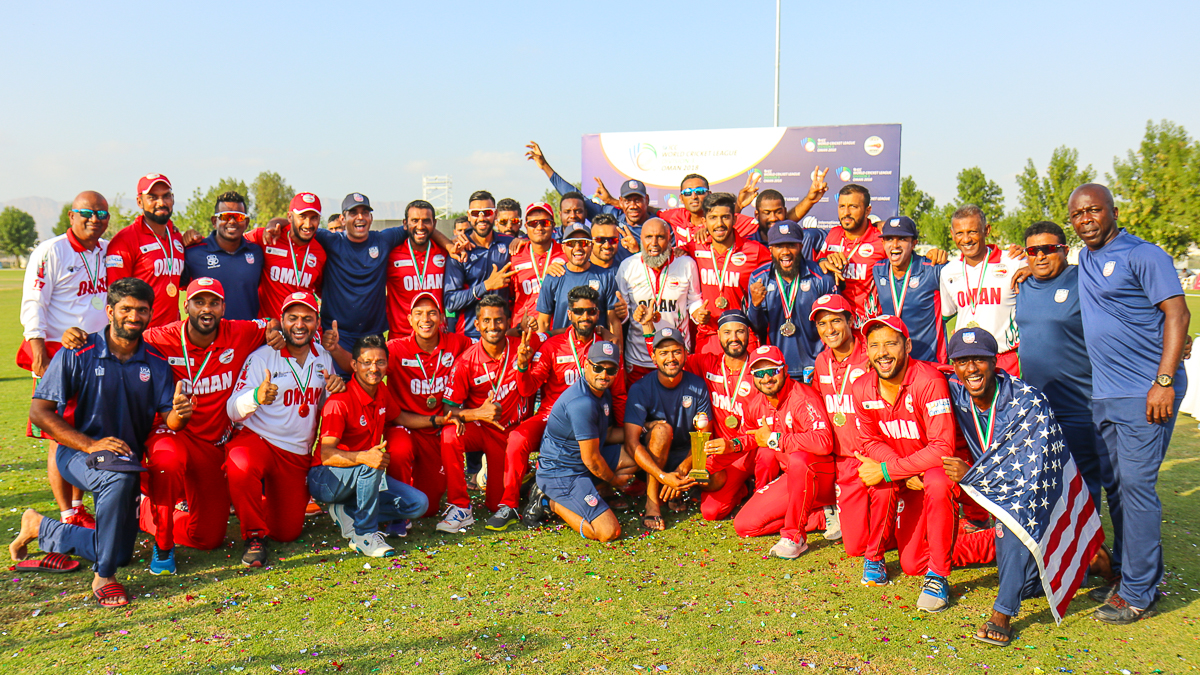
Photo credit: Copyright by Peter Della PennaThe final installment of DreamCricket's traditional Tour Report Card series takes a look at how USA can make improvements ahead of their participation at 2019 World Cricket League Division Two in Namibia
By Peter Della Penna (Twitter @PeterDellaPenna)
1. Arrange an Auty Cup for early 2019
As most people are aware, Canada will be one of USA’s five opponents at 2019 WCL Division Two in Namibia. The two countries could not come to an agreement to stage their traditional rivalry series in North Carolina this September, but it would be beneficial to both parties if they can organize a series for February or March 2019 in one of the many warm-weather venue options available in the USA.
Staging the series at least a month ahead of the WCL Division Two dates of April 18-28 will give both sides some much needed match time ahead of Division Two when there is currently nothing on the first quarter 2019 calendar at the moment for either side. It also means an opportunity to iron out any selection battles before finalizing a squad to go to Namibia.
2. Improve batting against spin
Ditching Ibrahim Khaleel as captain at the end of September seemed to alleviate team chemistry issues in Oman, though it also resulted in a weakening of USA’s ability to play spin. In spite of USA’s promotion, there remains a clear problem tackling slow bowling. Arguably USA’s toughest test against spin was offered by Denmark, who only ended the tournament with one win but presented a varied spin arsenal that gave USA fits and was only negated by the brilliant record-breaking sixth-wicket stand produced by Aaron Jones and Hayden Walsh.
Uganda committed a major tactical blunder by not picking Frank Nsubuga against USA, someone who had an outstanding record in prior contests against USA and subsequently proved to be one of Uganda’s best players on tour in Oman when he finally came into the lineup following their loss to USA. Similarly, Kenya troubled USA with spin but selecting one too many medium pacers played right into USA’s hands for a large chunk of the first innings in which USA comfortably went past 250.
Teams in Namibia are unlikely to make the same mistakes strategically that teams in Oman did. USA likewise needs to start preparing now to combat what will likely be a more exacting test against spin bowling than they faced in Oman.
On that front, the probability of Alex Amsterdam keeping his place in USA’s squad for Division Two is low. He struggled massively against spin in the CWI Super50 Cup leading into Division Three and unsurprisingly sat on the bench throughout the team’s time in Oman. Despite being a later call-up due to the injury to Sunny Sohal, Nisarg Patel actually has a better chance of remaining in the team because of his left-arm spin in addition to his batting. Nisarg also has gotten much fitter in the last six months and showcased that while on the field regularly as a sub fielder in Oman.
So who might compete for a chance to replace him in the squad? Fahad Babar has traditionally been an opening batsman for USA but showed during the USA squad camp this past June in Texas that he was capable of transitioning to a middle-order role to bat successfully against good spin bowling ahead of providing a strong finishing kick. Srinivas Raghavan batted alongside Babar during a century partnership which showcased his acumen against spin bowling as well. Having Babar in the side also presents USA with an option to take some pressure off Jaskaran Malhotra by possibly moving him down the order if necessary and opening with Babar instead if Malhotra’s struggles opening the batting continue.
Though he struggled at the most recent squad camp in Texas, Sagar Patel is a solid player of spin overall and one of the few not afraid to use his feet to slow bowling. Sagar was USA’s leading scorer at the 2015 Under-19 World Cup Qualifier in Malaysia and has played primarily as an opening batsman when he has played for the USA men’s team, but arguably has been miscast in that slot at senior level because he is a much better player of spin than he is against pace bowling, but often has gotten out early to the moving ball and as a result not gotten the chance to showcase his stronger skillset vs spin.
Another possible option is 18-year-old Raymond Ramrattan. The New Jersey batsman impressed at the 2017 Under-19 World Cup Qualifier in Toronto by top-scoring twice for USA against eventual champions Canada from his slot in the middle-order. His sturdy technique navigated USA through some absolutely horrendous pitches at King City, but Ramrattan also stood out for his calmness under intense pressure in both matches. He’s also a sharp fielder and can bowl handy legspin if called upon.
3. Get some fresh legs
Unsurprisingly, USA’s fitness was the weak point in Oman. It will be tested even greater at Division Two in a format which will have an even more condensed schedule under the traditional WCL format of six matches in eight days.
Four players from the current USA squad – Timil Patel, Elmore Hutchinson, Roy Silva and Jannisar Khan – will be 35 or older at the start of Division Two. Timil is the only one of the four who showed in Oman that he was able to maintain a high standard of both fitness and performance, not either or.
Barring injury, Timil and Jannisar’s spots in the USA squad are safe for Division Two. The same does not appear to be the case for Hutchinson or Silva. It would be foolish to write off either player just yet, in particular Hutchinson for his historically strong record performing for USA. It was just over a month ago at the CWI Super50 Cup that he took career-best figures of 5 for 42 against eventual champions Combined Campuses and Colleges.
But at the very least, it wouldn’t hurt to have competition for spots in the squad. It will help keep the intensity high and bring out a greater standard of fitness and performance, whether that is from the incumbents or possible replacements.
So who could be in line for a call-up to the USA squad that might add a different and more competitive dimension in terms of both bowling and fitness to USA heading into WCL Division Two?
Kyle Phillip showcased his tantalizing skillset in intermittent spurts during the CWI Super50 Cup in October. The 21-year-old showed in his opening spell that claimed three wickets against Leeward Islands on October 18 that when he’s in rhythm he can be an absolute menace with his height and bounce. Unfortunately, he also showed in his final spell in that same match what happens when he’s out of rhythm when he got clobbered by Rahkeem Cornwall after straying badly with his lines. He definitely needs some fine-tuning and is somewhat weak in the field but possesses some rare physical attributes that may make him a tempting gamble.
Jessy Singh is back to 100% fitness after his reconstructive knee surgery last year. He struggled taking on higher class batting at the Super50 Cup, routinely bowling way too full and then making things worse by going way too short, not to mention his chronic no ball issues. When he stays disciplined though, he provides a solid medium pace option not to mention is one of USA’s best fielders whether in the ring or on the boundary both in terms of his catching ability and his footspeed to the ball.
Another intriguing option yet to make his senior team debut is Keshav Pabbisetty. The Texan was USA’s standout fast bowler at the Under-19 World Cup Qualifier last year in Toronto with an immaculate line and length. Pabbisetty has a tall, wiry frame standing comfortably over six feet tall and has unusually long fingers that allow him to manipulate the ball easily with an array of cutters to keep batsmen off balance once the new ball swing wears off. Like Phillip, he needs to improve his fielding but he’ll be 19 by the time Division Two begins and has plenty of skill and energy to make USA a more competitive outfit in Namibia.
USA’s selection panels have long taken the safe route of experienced ex-first-class pros in an effort to put USA over the top. Not since Steven Taylor was picked as a 16-year-old in 2010 has USA made any sort of genuine effort to blood a teenager into the men’s squad. Picking Pabisetty, Ramrattan or both would send a signal that USA management is not only serious about getting fitter and younger, but also sends a message that there is hope for homegrown players to get opportunities rather than a reliance on players groomed overseas.
ICYMI - Click here to read Part 1 - Team Grades; and Part 2 - Player Grades
[Views expressed in this article are those of the author who was present at all of the team's matches. If you have differing views or opinions, we respect those views and urge you to provide your feedback - both positive and negative – feel free to respond to the author via Twitter @PeterDellaPenna.]
